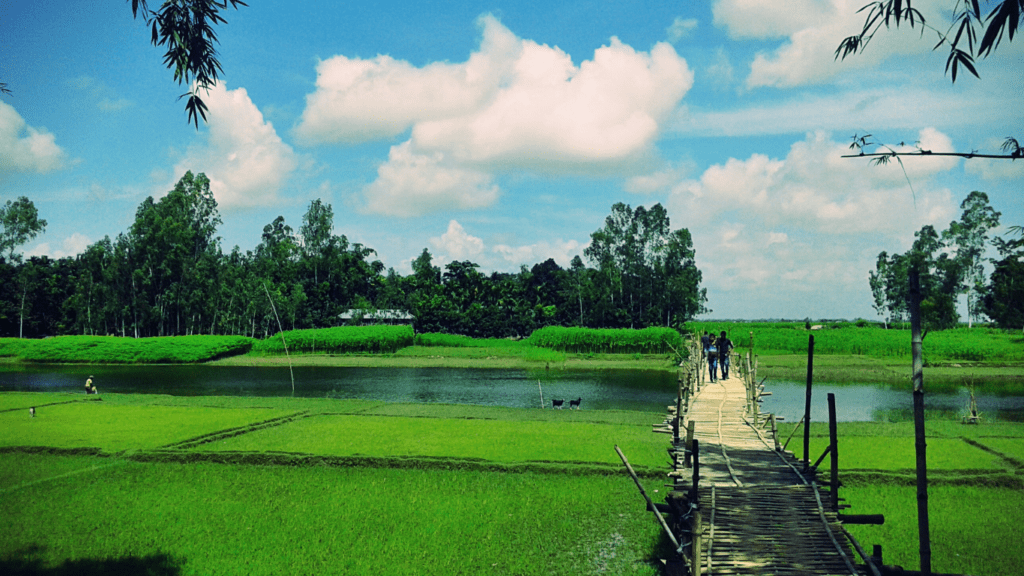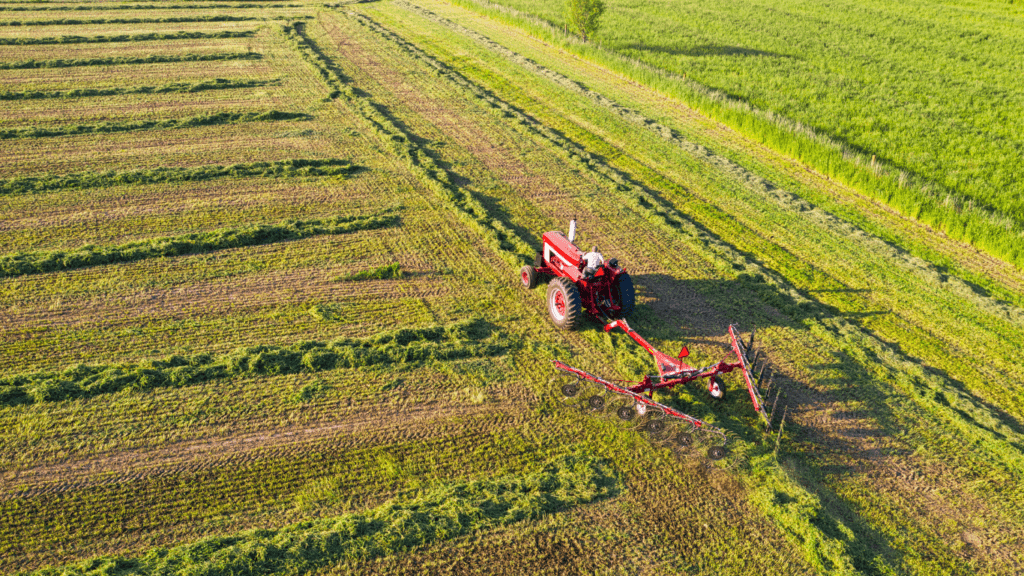The Role of Technology in Modern Farming
Drones in Agriculture
Drones provide real-time aerial views of large fields. Farmers monitor crop health, detect diseases, and optimize irrigation using these aerial insights. Drones equipped with multispectral sensors identify areas needing attention, boosting crop yield.
Automated Tractors
Automated tractors increase efficiency. These machines, guided by GPS technology, perform tasks like:
- plowing
- planting
- harvesting
without human intervention. Precision in operations reduces waste and resource usage, contributing to sustainable farming.
Precision Agriculture
Precision agriculture tailors farming practices. Using GPS, soil sensors, and data analytics, farmers apply precise amounts of water, fertilizers, and pesticides. This approach minimizes input costs and environmental impact while maximizing productivity.
IoT Devices
IoT devices enhance farm management. Sensors installed in fields monitor soil moisture, temperature, and other critical parameters. Data from these sensors helps make informed decisions, ensuring optimal conditions for crop growth.
Future Prospects
Technological advancements continue to shape farming’s future. Innovations like AI-driven automation, climate-resilient crops, and blockchain for supply chain transparency are poised to further transform agriculture. Embracing these technologies ensures food security and sustainable farming practices.
Historical Perspective on Farming Technology
The journey of farming technology spans centuries, evolving from rudimentary tools to complex machinery. Early innovations and the Industrial Revolution played pivotal roles in this transformation.
Early Innovations
Early agricultural tools laid the groundwork for future advancements. Simple hand tools like hoes, sickles, and plows emerged thousands of years ago. These innovations increased productivity, enabling farmers to cultivate more land and yield larger harvests. The development of animal-drawn plows in ancient Mesopotamia around 4000 BCE marked a significant leap, allowing for deeper tilling and more efficient soil preparation.
Industrial Revolution
The Industrial Revolution in the late 18th century marked a dramatic shift in farming technology. Mechanized equipment, such as the seed drill invented by Jethro Tull in 1701, revolutionized planting processes by ensuring seeds were distributed evenly and at the correct depth.
The introduction of steam-powered tractors in the 19th century replaced animal power, significantly increasing efficiency and reducing labor costs. Additionally, the McCormick reaper, patented in 1834, mechanized the harvesting process, allowing farmers to reap larger areas swiftly and with less manual effort.
These historical advancements in farming technology set the stage for the sophisticated systems and equipment used in modern agriculture today.
Contemporary Technological Advancements
Modern farming has experienced a paradigm shift due to contemporary technological advancements. These developments have enhanced agricultural efficiency, productivity, and sustainability.
Precision Agriculture
Precision agriculture involves sophisticated tools to analyze soil and crop health. By using GPS and remote sensing technologies, I can manage fields at a micro-level. For instance, GPS-guided machinery allows precise planting and reduced waste. Soil sensors provide real-time data on moisture and nutrient levels, optimizing irrigation and fertilization schedules.
Drones and Aerial Imaging
Drones and aerial imaging offer unparalleled advantages in farm management. They capture high-resolution images to map fields, monitor crop health, and detect issues like pest infestations. With multispectral imaging cameras, I can assess plant vitality by analyzing vegetation index data. Drones also spray pesticides and fertilizers, covering large areas swiftly and uniformly.
These technological advancements significantly contribute to modern farming’s robustness and resilience.
The Impact on Crop Production
Technology in modern farming boosts crop production efficiency. Innovations enhance yield, disease resistance, and pest control.
Yield Improvement
Precision agriculture leads to significant yield improvements. By using GPS and remote sensing, farmers optimize planting patterns and allocate resources more efficiently.
This targeted approach reduces waste and maximizes output. High-yield seed varieties, developed through genetic research, contribute to increased production. Modern irrigation systems, including drip and sprinkler technologies, ensure crops receive the optimal amount of water, reducing drought stress and improving plant health.
Pest and Disease Control
Advanced technologies enhance pest and disease control. Drones equipped with cameras and sensors monitor fields for early signs of infestations and infections.
This real-time data enables prompt intervention, minimizing crop loss. Integrated pest management (IPM) combines biological, chemical, and cultural practices to manage pest populations sustainably.
Biotech solutions, like genetically modified organisms (GMOs), offer crops with built-in resistance to specific pests and diseases, reducing the need for chemical pesticides and fostering a healthier environment.
Sustainable Farming Practices

Modern farming technology emphasizes sustainability, incorporating methods that enhance resource management and reduce environmental impact.
Resource Management
Efficient resource management forms the backbone of sustainable farming. Precision agriculture technologies, for example, use real-time data to optimize water, fertilizer, and pesticide usage. This ensures that crops receive exactly what they need, reducing waste and conserving resources.
- Water Management: Advanced irrigation systems, such as drip irrigation and soil moisture sensors, allow for precise water application. This reduces water waste and ensures crops receive adequate hydration.
- Nutrient Management: GIS-based soil mapping helps identify specific field regions needing fertilization. Farmers can apply fertilizers more accurately, preventing overuse and minimizing runoff.
- Energy Efficiency: Renewable energy sources, like solar and wind power, are increasingly used on farms. This shift reduces reliance on fossil fuels and promotes energy sustainability.
Reducing Environmental Impact
Sustainable farming also focuses on minimizing its environmental footprint. These practices help maintain ecological balance while promoting agricultural productivity.
- Carbon Footprint Reduction: Implementing no-till farming reduces soil disturbance, conserving soil carbon and mitigating greenhouse gas emissions. Cover cropping further enhances soil health by adding organic matter and controlling erosion.
- Pest Management: Integrated pest management (IPM) strategies reduce reliance on chemical pesticides. IPM uses a combination of biological, cultural, and mechanical methods to control pests, minimizing environmental harm.
- Biodiversity Conservation: Establishing buffer strips and wildlife corridors supports biodiversity on farmlands. These areas provide habitats for beneficial insects and wildlife, contributing to a balanced ecosystem.
- Waste Management: On-farm waste recycling, composting, and converting organic waste into bioenergy reduce pollution and enhance soil fertility.
These sustainable practices, empowered by modern technology, are paving the way for a future where farming is both productive and environmentally responsible.
Challenges and Limitations
Despite the benefits technology brings to modern farming, there are notable challenges and limitations that need addressing.
High Costs
Adopting advanced technology in farming often involves significant investments. The initial cost of purchasing and setting up equipment like drones, GPS systems, and automated machinery can be prohibitive for many small-scale farmers.
Additionally, maintenance and repairs add to ongoing expenses. For example, high-precision GPS systems can cost upwards of $10,000, which is beyond reach for many smallholders. These financial barriers can delay or prevent the widespread adoption of beneficial technologies.
Technological Integration
Integrating new technologies into existing farming practices can be complex and labor-intensive. Farmers must possess the necessary technical skills to operate and maintain advanced equipment. This requirement for specialized knowledge can lead to a steep learning curve, especially for those unfamiliar with digital tools.
For instance, implementing precision agriculture techniques requires understanding variable rate applications and data analysis, which can be challenging without proper training. Furthermore, compatibility issues between different technological platforms can hinder seamless integration, complicating farm operations.
Future of Technology in Farming
Technology in farming holds immense potential to revolutionize agriculture. The integration of advanced systems promises increased efficiency, productivity, and sustainability in future farming practices.
Emerging Trends
Several trends are shaping the future of farming technology. Precision agriculture uses advanced sensors, GPS, and data analytics to enable farmers to optimize field management.
Drones monitor crop health, survey fields, and assist in planting. Autonomous machinery performs tasks like planting, watering, and harvesting with minimal human intervention. Blockchain ensures transparency and traceability in the supply chain. AI and machine learning predict crop yields, detect diseases early, and optimize resource use.
Potential Innovations
Future innovations in farming technology promise unprecedented advancements. Vertical farming allows for food production in urban areas by stacking crops in controlled environments.
Genetic engineering improves crop resistance to pests and adverse conditions. Smart irrigation systems adjust water delivery based on soil moisture data, reducing water waste. Robotics automation streamlines labor-intensive tasks, enhancing productivity. Renewable energy sources, like solar and wind, power farm operations sustainably, reducing reliance on non-renewable resources.
These emerging trends and potential innovations are set to transform the agriculture landscape, driving more efficient and sustainable farming practices.



